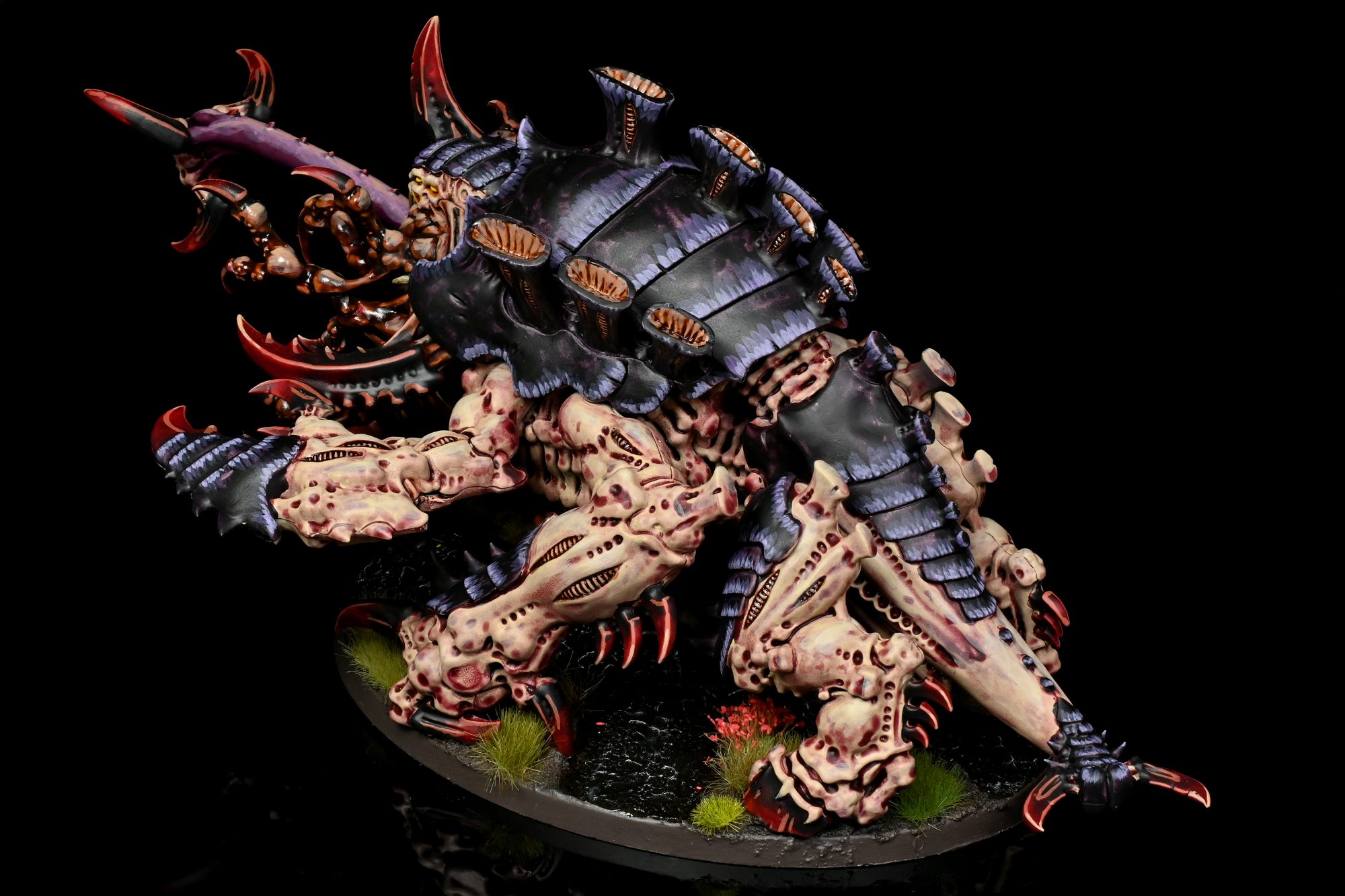In our How to Paint Everything series, we take a look at different armies of the Warhammer universe, examine their history and heraldry, and look at several different methods for painting them. In this article, we’re looking at the dreaded hive fleets of the Great Devourer – the Tyranids.
Hailing from the dark intergalactic void beyond the galaxy, Tyranids are (relatively) recent arrivals to the grim darkness of the far future from an in-game timeline standpoint, having only really arrived in the 41st millennium when the Imperium made its first official contact with Hive Fleet Behemoth. Following that contact, the forces of the Great Devourer have spread across the galaxy, razing entire worlds and scouring them of life, devouring their biomass and consuming their natural resources. Tyranids are a composite species that devour and recombine the genetic material of their prey to evolve and produce new organisms.
In the 41st millennium, the Tyranids are unique in that they’re an army with no vehicles or technology as we’d commonly understand it – instead they rely on symbiotic bioweapons and massive monsters to destroy their enemies in battle. Even the Tyranid hive ships are massive, voidborne living organisms capable of interstellar travel. This means that when painting Tyranids you’ll be working with lots of organic shapes, bone, and tissue.
In this article we’re going to take a look at different techniques for painting the Tyranids, with a look at how to paint each of the main canonical hive fleets known for ravaging the galaxy – and a few lesser fleets as well.
Covered in this Article
- Techniques for painting the core elements of the Tyranids, including chitinous armor plates.
- Schemes for painting each of the major Tyranid Hive Fleets – and schemes for quite a few minor and custom hive fleets.
- Articles on how to paint specific large Tyranid monsters.
 Chitinous Plates - Click to Expand
Chitinous Plates - Click to Expand

Jungle Bases - Click to expand

Hive Fleets - Click to Expand

Special Units - Click to Expand
The Wrap-Up (with Tendrils)
That wraps up our look at how to paint Tyranids but there are a ton of ways to skin this particular hyper-evolved cat – Tyranids are great because they’re one of the most colorful and varied armies in the game, and let you work with all kinds of bright colors and “out there” combinations. As always, if you have any questions or feedback, drop us a note in the comments below or email us at contact@goonhammer.com.

 In Rockfish’s Leviathan scheme -demonstrated above – The carapace is basecoated black or very dark purple and then highlighted in Genestealer and Dechala, in rough little strokes starting a bit into the panel and moving to the edge.
In Rockfish’s Leviathan scheme -demonstrated above – The carapace is basecoated black or very dark purple and then highlighted in Genestealer and Dechala, in rough little strokes starting a bit into the panel and moving to the edge.

























